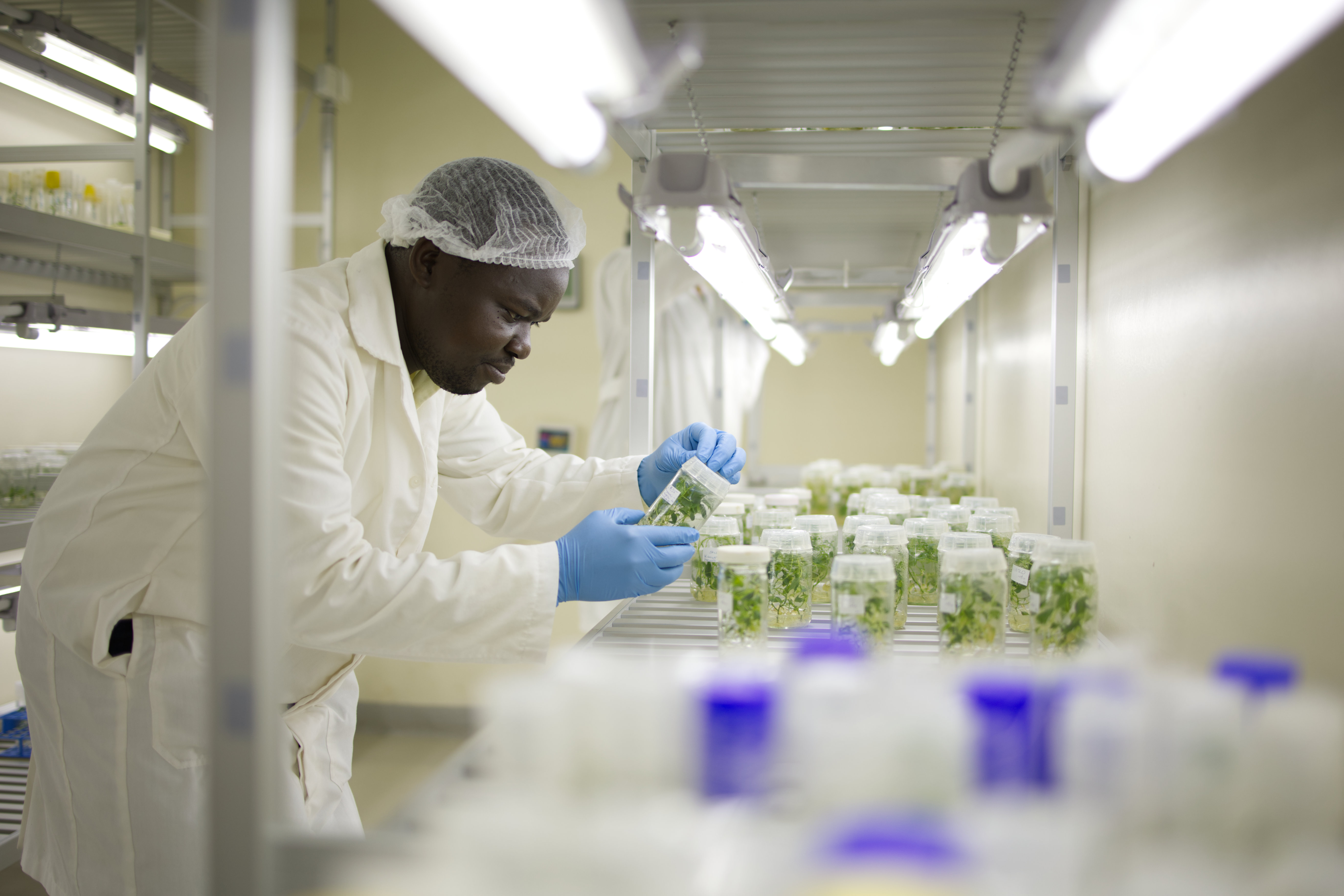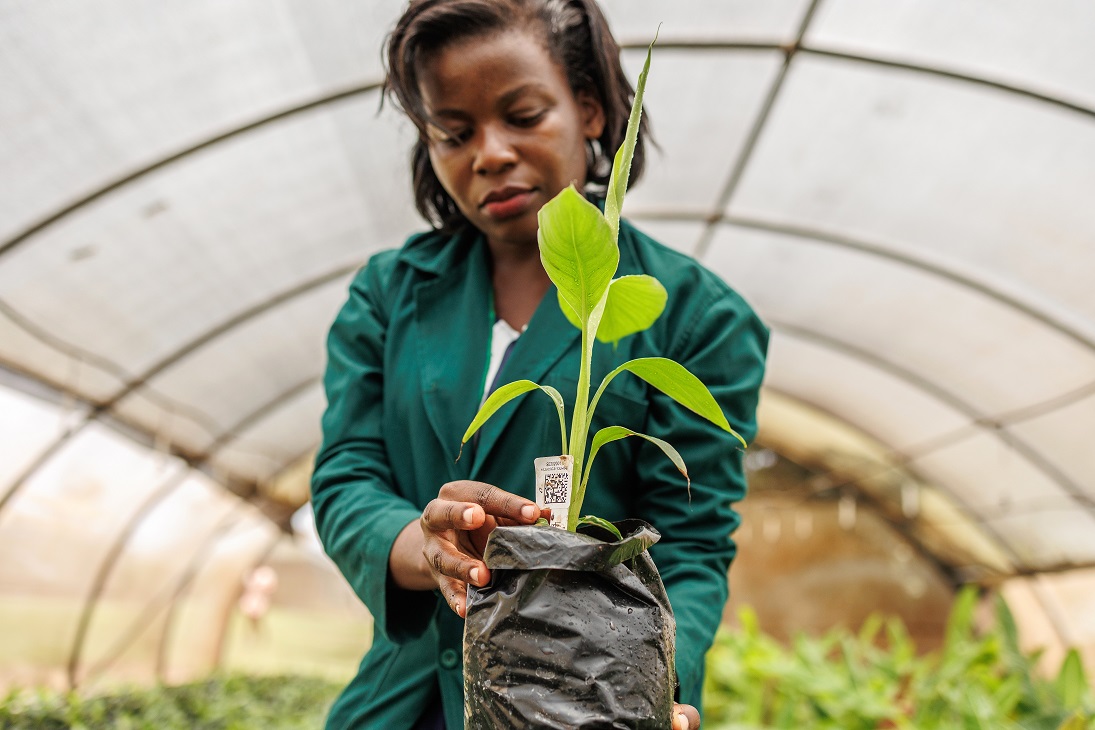Inside Genetic Innovation’s process management: mapping processes to enhance breeding research services



A talk from EiB/Accelerated Breeding's Marlee Labroo on "Comparisons of hybrid breeding strategies in clonal polyploids" at the2023 Tools for Polyploids workshop (1/13/2023).
Linking data management systems to analytics is an important step in breeding digitalization.

This training is a professional development course designed by the Excellence in Breeding (EiB) Platform to increase the skillset of plant breeders to design breeding schemes. Across the public and private sector there is a gap on how to design breeding schemes and instead breeding schemes are normally inherited from one breeder to the other. EiB’s Module 2 and collaborators from seed industry have addressed this issue by developing and making this training available.
This tool aims to help breeding professionals to formalize the market segments, product profiles and breeding schemes associated to their breeding program(s). It serves as repository of valuable information that can be used for different purposes, e.g. discussions with leadership on proper targets, level of investment in different markets, breeding scheme optimization discussions to allocate resources more efficiently, share information with partners remotely, among others. The resulting documents can be considered the “blueprints” of the design step in the breeding process.
In this Story of Excellence, Vivian Polar (CGIAR Research Program on Roots, Tubers & Bananas and the Gender and Breeding Initiative) shared how G+ Tools are being used to help plant breeders interpret gender research to create varieties that meet the needs of women and other farmers.
In this Story of Excellence, Hannele Lindqvist-Kreuze (the International Potato Center, CIP) shares how CIP is optimizing and scaling up genotyping to accelerate breeding while maintaining low costs.
In this Story of Excellence, Juan Arbelaez (the University of Illinois at Urbana-Champaign) and Maribel Cruz (Latin American Fund for Irrigated Rice) present their work on genetic and phenotypic characterization of rice grain quality traits to define breeding strategies for improving rice milling, appearance, and cooking qualities in Latin America and the Caribbean.
A new costing tool is helping national breeding programs get the financial data needed to improve their efficiency, effectiveness and transparency. And now, in its first in-person event since the beginning of the pandemic, CGIAR Excellence in Breeding (EiB) has prepped six African National Agricultural Research and Extension Systems (NARES) to fully cost their programs.
Genomic selection/prediction is becoming an important tool to maximize genetic gain in breeding programs. The method covers multiple ways to improve different aspects of the breeders’ equation.
Parthiban Prakash presents the current state of genomic prediction application in the rice program at IRRI located in the Philippines. Prakash covers the application of GS to increase accuracy and change selection intensity in the IRRI rice program, discusses current plans to reduce cycle time and the challenges of implementing GS in an ongoing program.
Giovanny Covarrubias-Pazaran (EiB) presents the genomic prediction workshop and outlines the topics to be covered and guest speakers.
About this training:
Giovanny Covarrubias-Pazaran presents how to implement genomic prediction to properly manage genetic variance. The logistical challenges that will be faced during adoption are then discussed, along with a summary of the different uses of genomic selection (GS).
Yoseph Beyene presents the current state of genomic prediction application in the CIMMYT maize breeding program in East Africa. Yoseph presents the use of GS to increase accuracy and change selection intensity in the maize program and discusses the challenges of implementation in an ongoing breeding program.
Eng Hwa Ng and Rajaguru Bohar present the current genotyping shared services available from EiB to enable low, mid and high-density genotyping for the application in genomic selection. The link to trait augmentation is presented and the logistical challenges involved in starting to genotype the early-stage materials from programs is discussed. A network strategy for genotyping is presented to breeders. Costs, workflows, panels available and crop status are discussed by Rajaguru.
Giovanny Covarrubias-Pazaran presents how to implement genomic prediction to change selection intensity. It is possible to increase selection intensity at an additional cost (although lower than the cost of phenotyping) or maintain the same intensity and accuracy with reduced costs.
Additionally, Covarrubias-Pazaran presents how to implement genomic prediction to reduce cycle time. This implies predicting individuals that have not been observed before while also predicting haplotypes that have not been observed before.
Giovanny Covarrubias-Pazaran presents how to implement genomic prediction to increase the accuracy of field trials by using a genomic relationship matrix to predict haplotypes and individuals. This is especially useful when heritabilities in field trials are low.
This session is focused on the basics of what genomic prediction implies in terms of data and models and applications. Common questions raised by CGIAR programs during interactions with the EiB platform are also covered.
New series of manuals developed by EiB is a practical guide to designing crossing, evaluation and selection strategies, and developing performance indicators such as genetic gain and heritability.
In the past, plant breeding has helped avert entire famines by changing a handful of genes in key crop varieties. But today's breeders must meet similar challenges with consistent excellence, making the right decisions each season to refine natural genetic diversity into a multitude of hard-working food crops.
The “Breeding Costing Tool” is a powerful solution for allowing users to estimate the cost of crop breeding and its associated research activities and to help breeders make decisions about resource allocation. The costing tool is designed to calculate the cost of running a crop breeding activity, or an entire breeding pipeline, using the prices, costs and salaries from a single year. The software is freely available from the Queensland Alliance for Agriculture and Food Innovation and the University of Queensland in Australia.
AlphaSimR is a GitLab repositorium with R code addressing multiple simulation questions for designing breeding programs. This includes proper program size, experimental designs, surrogates of genetic merit, reduction of cycle time, among others (this is only accessible to a small number of users on request).
Link: https://gitlab.com/excellenceinbreeding/module2
Contact: g.covarrubias@cgiar.org
A tool to explore the trade offs among multiple traits using selection indices. Final weights for selection can be used using this tool.
Link: https://bkinghor.une.edu.au/desire.htm
Contact: bkinghor@une.edu.au
A tool to perform multi environment trial analysis and obtain adjusted means for genotypes that can be used in recycling, selection decisions and genetic gain calculation.
Link: apariciojohan.github.io/MrBeanApp/
Contact: j.aparicio@cgiar.org
What is the best selection method?
Selection methods for multiple traits aim to find the balance to increase the population means for multiple traits.
These simulation reports demonstrate the differences between classical methods such independent culling and selection indices, to support the practical implementation of indices.
Contact: g.covarrubias@cgiar.org
What is an optimal program size?
The size of the breeding program is something that can increase the genetic gain by taking advantage of factors such as selection intensity or the among- and within-family variance.
These simulation reports demonstrate the trade-offs between of number of parents, crosses and progeny per cross, and provide practical advice on how to set the level of each.
Contact: d.gemenet@cgiar.org
What is the right number of testers?
Hybrid breeding aims to keep and increase the non-additive interactions in the final products while increasing the additive genetic value in a recurrent selection program.
The following simulation reports and retrospective analyses explore questions such as how many testers should be used to capture the general combining ability (GCA) that maximizes additive and non-additive effects.
Contact: d.gemenet@cgiar.org
Should we move to hybrid breeding?
Hybrid breeding aims to keep and increase the non-additive interactions in the final products while increasing the additive genetic value in a recurrent selection program.
The following simulation reports show how the hybrid genetic model applies to non-inbred crops and different ploidies. In addition, we provide practical advice for related questions related to testers, 3-way crosses, etc.
Contact: m.r.labroo@cgiar.org